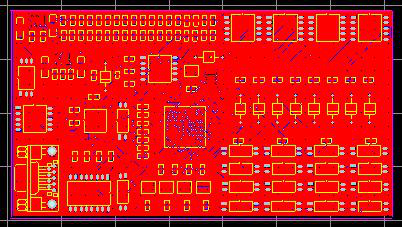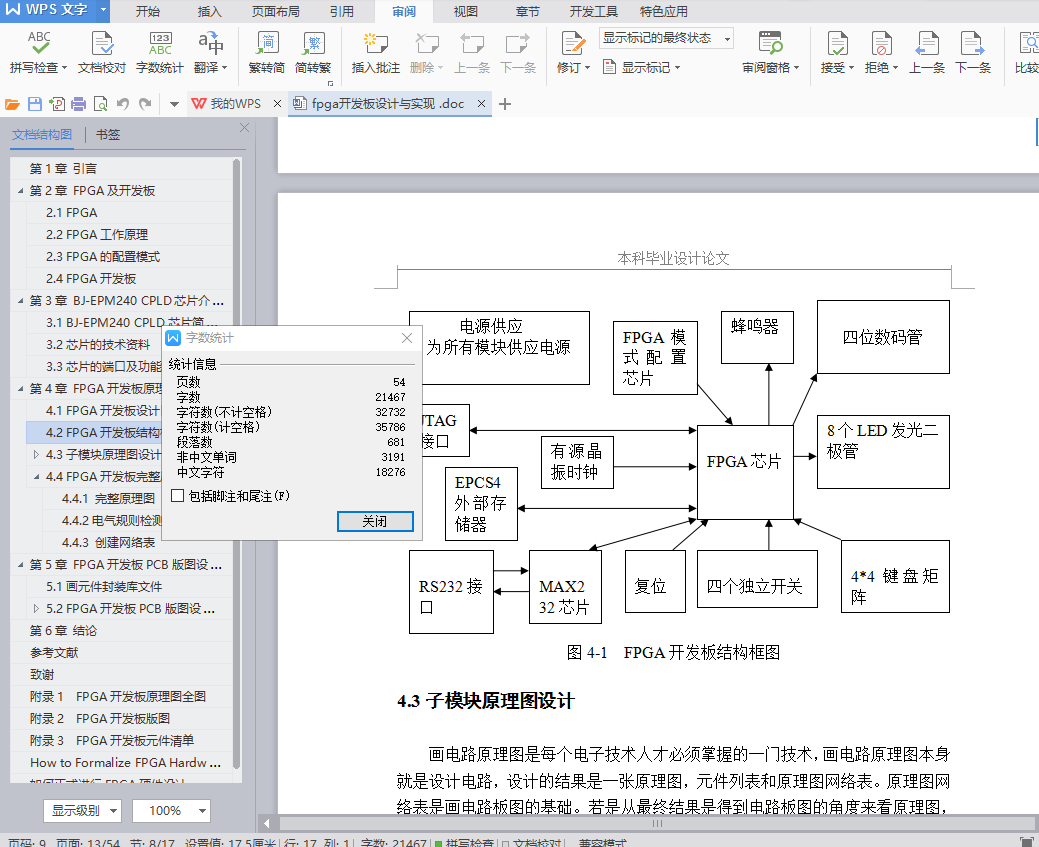摘要
FPGA即现场可编程门阵列,它是在可编程阵列逻辑PAL,门阵列逻辑GAL,可编程逻辑器件PLD等可编程器件的基础上进一步发展的产物。它是作为专用集成电路ASIC领域中的一种半定制电路而出现的,既解决了定制电路的不足,又克服了原有可编程器件门电路数有限的缺点。FPGA能完成任何数字器件的功能,上至高性能CPU,下至简单的74系列电路,都可以用FPGA来实现。FPGA如同一张白纸或是一堆积木,工程师可以通过传统的原理图输入法或是硬件描述语言自由设计一个数字系统。通过软件仿真,我们可以事先验证设计的正确性。在PCB完成以后,还可以利用FPGA的在线修改能力,随时修改设计而不必改动硬件电路。使用FPGA来开发数字电路,可以大大缩短设计时间,减少PCB面积,提高系统的可靠性。采用FPGA设计ASIC电路,用户不需要投片生产,就能得到合用的芯片。 运用protel开发软件,通过对通用型FPGA开发板的原理图设计与PCB印制电路板的制作,深入了解FPGA的接口功能与拓展电路的功能原理及应用,对出现的问题进行分析与解决,从而对FPGA芯片功能的认识以及对FPGA拓展电路的认识,进而学会FPGA产品的开发与应用。
关键词:FPGA;开发板;BJ-EPM240 CPLD;pcb
ABSTRACT
FPGA is the field programmable gate array, which is the product of further development based on the programmable array logic PAL, gate array logic GAL, programmable logic device PLD and other programmable devices. It appears as a kind of semi-custom circuit in the field of application-specific integrated circuit ASIC, which not only solves the defect of the custom circuit, but also overcomes the shortcomings of the limited number of original programmable devices. FPGA can complete the function of any digital device, up to high-performance CPU, down to a simple 74 series circuit, can use FPGA to achieve. FPGAs are like a piece of white paper or stacked wood. Engineers can freely design a digital system through traditional schematic input methods or hardware description languages. Through software simulation, we can verify the correctness of the design in advance. After the PCB is completed, it is also possible to use the on-line modification capabilities of the FPGA to modify the design at any time without changing the hardware circuit. Using FPGAs to develop digital circuits can greatly reduce design time, reduce PCB area, and increase system reliability. FPGA design ASIC circuit, users do not need to shoot production, you can get a shared chip. Using protel development software, through the schematic design of general-purpose FPGA development board and PCB printed circuit board production, in-depth understanding of FPGA interface functions and extended circuit functional principles and applications, the analysis of the problems and solutions, The understanding of the functions of the FPGA chip and understanding of the FPGA extension circuit, and then learn the development and application of FPGA products.
Keywords: FPGA; development board; BJ-EPM240 CPLD; pcb
目录
第1章 引言 1
第2章 FPGA及开发板 2
2.1 FPGA 2
2.2 FPGA工作原理 2
2.3 FPGA的配置模式 3
2.4 FPGA开发板 3
第3章 BJ-EPM240 CPLD芯片介绍 4
3.1 BJ-EPM240 CPLD芯片简介 4
3.2芯片的技术资料 4
3.3芯片的端口及功能分析 5
第4章 FPGA开发板原理图设计 9
4.1 FPGA开发板设计目标 9
4.2 FPGA开发板结构框图 9
4.3子模块原理图设计 10
4.3.1电源电路及原理图设计 10
4.3.2 BJ-EPM240 CPLD芯片电源接口 14
4.3.3 MSEL端口 15
4.3.4 全局时钟引脚CLK 15
4.3.5 nCONFIG复位电路配置接口 16
4.3.6 配置芯片EPCS4 17
4.3.7 JTAG配置接口 18
4.3.8 RS232串口电路 19
4.3.9 数码管电路 20
4.3.10 LED指示灯电路 22
4.3.11蜂鸣器 24
4.3.12 矩阵键盘 25
4.3.13 独立按键开关电路 26
4.4 FPGA开发板完整原理图设计 27
4.4.1 完整原理图 27
4.4.2电气规则检测(ERC) 28
4.4.3 创建网络表 28
第5章 FPGA开发板PCB版图设计 30
5.1画元件封装库文件 30
5.2 FPGA开发板PCB版图设计 34
5.2.1 打开PCB版图设计窗口 34
5.2.2 载入网络表 34
5.2.3元件布局 35
5.2.4 排列元件 36
5.2.5 画禁止布线层 36
5.2.6 隐藏元件名称 37
5.2.7布线 38
5.2.8 铺铜 39
5.2.9 DRC设计规程校验 39
5.2.10打印输出 39
第6章 结论 40
参考文献 41
致谢 42
附录1 FPGA开发板原理图全图 43
附录2 FPGA开发板版图 44
附录3 FPGA开发板元件清单 45
How to Formalize FPGA Hardware Design 46
如何正式进行FPGA硬件设计 49






